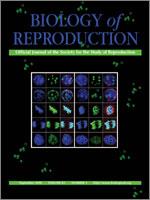The protandrous black porgy, Acanthopagrus schlegeli, has a striking life cycle, with sex differentiation at the juvenile stage, mono-male development, a bisexual gonad during the first 2 yr of life, and a male-to-female sex change (with vitellogenic oocytes) at 3 yr of age. In the present study, we investigated the possible roles of amh and amhr2 in gonadal development in a nonmammalian model organism (protandrous black porgy), especially in relation to sex differentiation, testicular and ovarian growth, and sex change. Fish of various ages were treated with estradiol or an aromatase inhibitor to induce the fish to become female. Furthermore, a natural sex change (2 -yr-old [>2 yr and <3 yr] fish) and a nonchemical method to surgically remove one of the pair of gonads to examine the possible roles of amh in the natural sex change were conducted. We present integrative in situ hybridization, immunohistochemical, cellular, and molecular data describing these phenomena. During gonadal sex differentiation, an increase in amh and amhr2 expression was detected. Higher levels of amh and amhr2 transcripts were observed in the testicular tissue when compared to the ovarian tissue in the bisexual gonad of 1 -yr-old (>1 yr and <2 yr) fish. Transcripts of amh reached peak levels in November (prespermatogenesis period) and then declined to the lowest levels in January (spawning period). Chemical-induced ovarian tissue had very low amh transcript levels but high levels of amhr2. Active testes had significantly higher amh and amhr2 expression levels as compared to inactive testes. In contrast, no difference in the expression of amh and amhr2 between active and inactive ovarian tissues was found. Transcripts of amh were expressed in the somatic cells of the spermatogonia and vitellogenic oocytes, and amhr2 was expressed in the somatic cells of the spermatogonia. Transcripts of amh decreased in the testicular tissue 5 mo before occurrence of the sex change into a female. In contrast, testicular amh expression remained high if the fish remained male. Human chorionic gonadotropin regulated amh and amhr2 expression in the testicular tissue but not in the ovarian tissue. The present results suggest that amh plays important roles in early testicular and ovarian development, late ovarian growth (e.g., vitellogenic oocytes), and natural sex change in the protandrous black porgy.
How to translate text using browser tools
26 May 2010
The Expression of amh and amhr2 Is Associated with the Development of Gonadal Tissue and Sex Change in the Protandrous Black Porgy, Acanthopagrus schlegeli
Guan-Chung Wu,
Po-Chia Chiu,
Ying-Syuan Lyu,
Ching-Fong Chang
ACCESS THE FULL ARTICLE

Biology of Reproduction
Vol. 83 • No. 3
September 2010
Vol. 83 • No. 3
September 2010
Amh
amhr2
gonadal development
gonadal sex differentiation
oocyte development
sex change testis




